How opium, imperialism boosted Chinese art trade
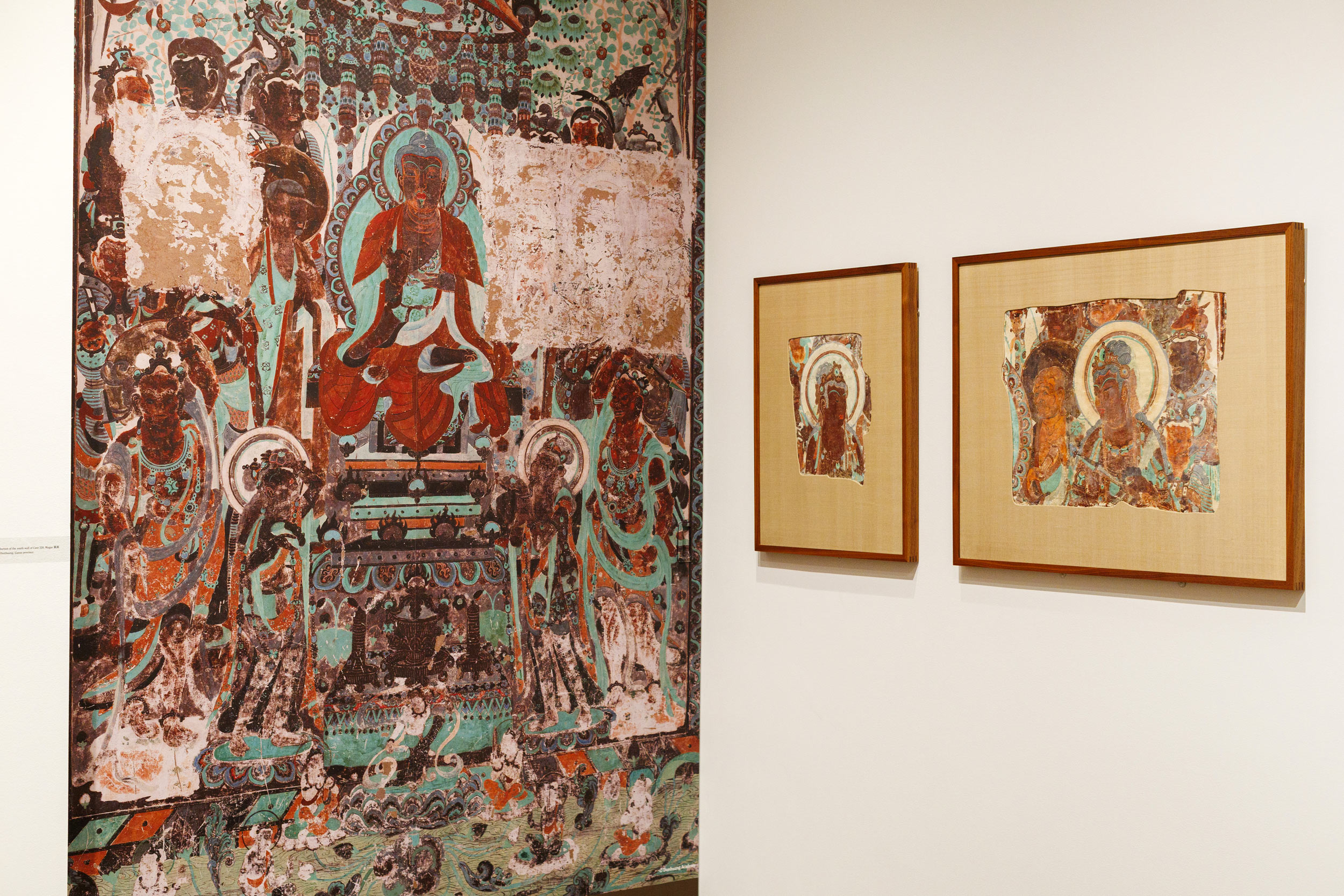
Photos by Stephanie Mitchell/Harvard Staff Photographer
Harvard Art Museums exhibition chronicles history, explores lessons for U.S. drug crisis
For years a painting of ships passing each other in a foreign harbor hung largely unnoticed in a since-forgotten Harvard office. The work shows vessels large and small, some with vivid red flags atop their masts, all set against a blue sky. But that picturesque if unremarkable scene actually captures a snapshot of part of a dark history of addiction and imperialism, and the lasting legacy that fostering the opium trade had on Massachusetts and the nation.
That 19th century painting, “Port of Shanghai,” is now part of the Harvard Art Museums exhibition “Objects of Addiction: Opium, Empire, and the Chinese Art Trade,” on display through January. It depicts Western traders — several flying Massachusetts merchant flags — bringing illicit goods into China.
The show examines how traders seeking silks, tea, porcelain, and paintings ramped up illegal imports of opium to China in the early 19th century. The resulting widespread addiction and attempts to halt importation led to wars with European powers. All of it ended up contributing to a growing interest in the West in collecting Chinese art, some of which had been looted during armed conflict.
“I was really interested in how we can use history to understand the present,” said Sarah Laursen, the Alan J. Dworsky Associate Curator of Chinese Art. “I wanted to think about what lessons we can learn from it and how it affects our lives today, both in terms of museums and what our current collecting policies are, but also how that connects to the opioid epidemic, which has really only gotten worse over the years in spite of the efforts of a lot of politicians and public health officials.”
The opium trade in China began in the 18th century when the British East India company found that the drug, mostly produced in India, would be a competitive commodity in trade for tea. Outlawed by the Qing dynasty, opium was sold through a network of smugglers and corrupt Chinese merchants.
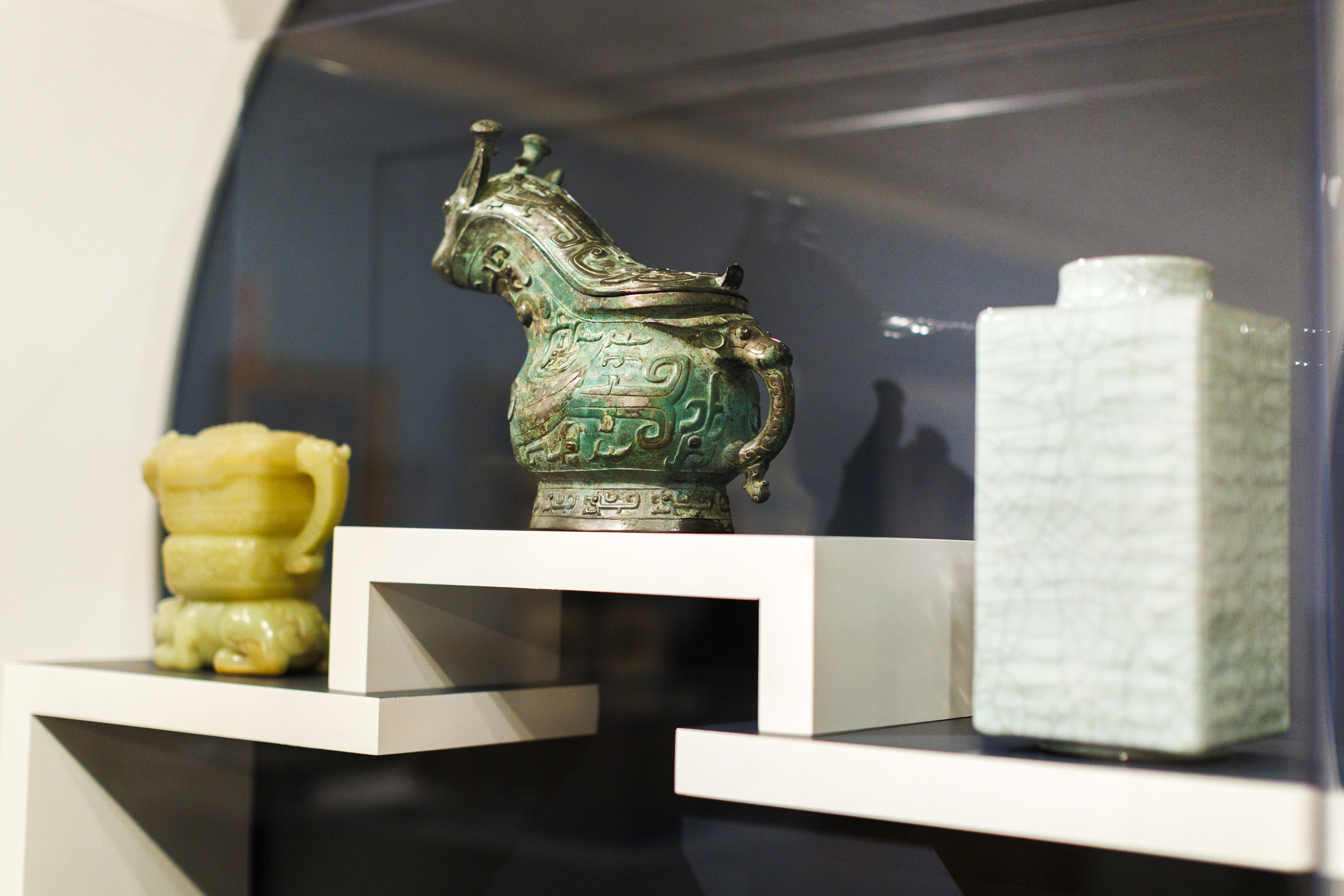
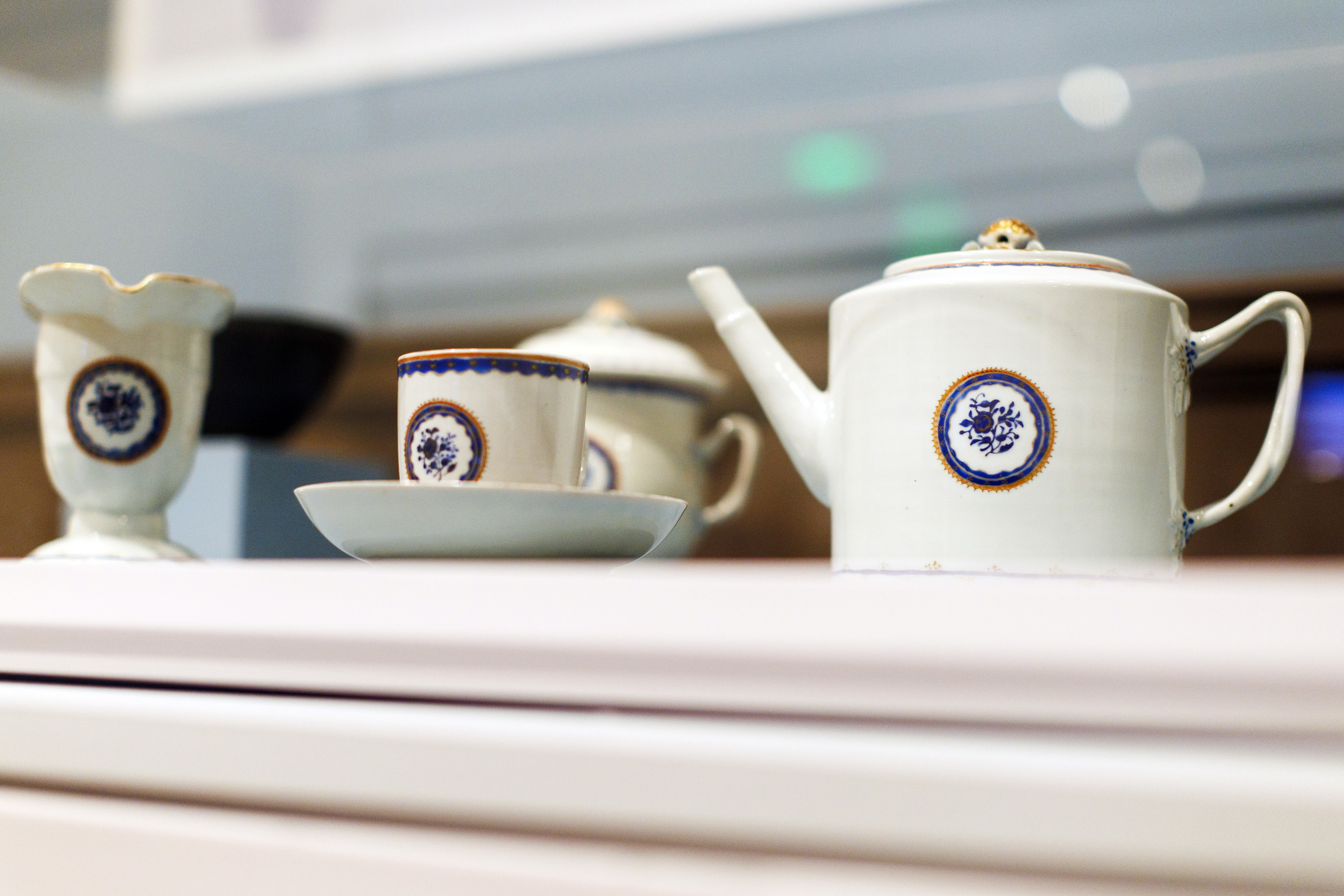
Among the items on display are vessels and a tea service for the American or European market.
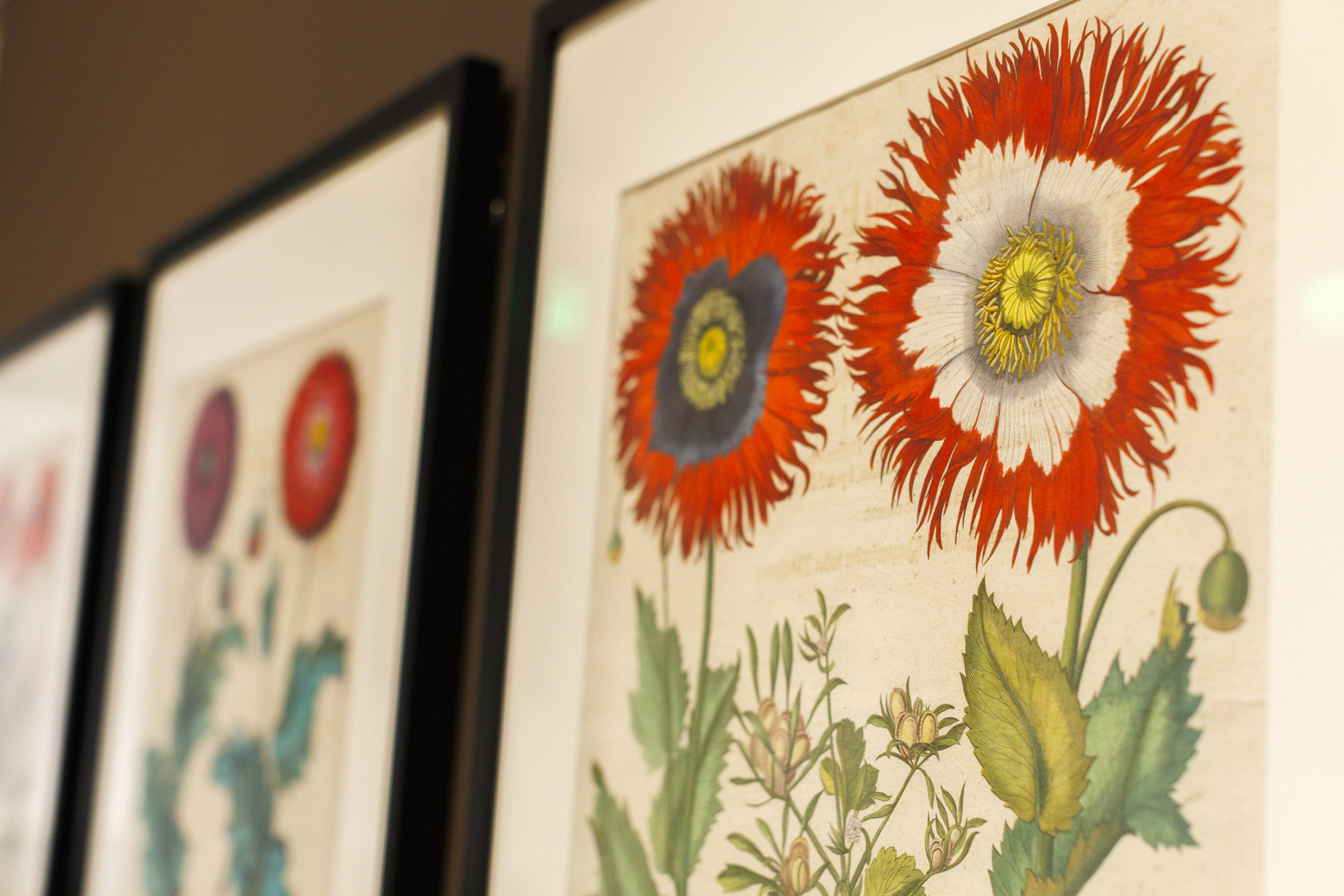
“There really would be no opium trade if there weren’t a tea trade before that,” Laursen said.
Opium started as a pastime of the upper class. Wealthy merchants and government officials smoked it in homes, offices, and brothels with ornate, hand-made pipes. Lower-quality opium would make its way to the less wealthy, who typically partook using communal paraphernalia in hidden dens.
The U.S. entered the China opium trade in the 19th century via Boston firms spearheaded by wealthy elites such as Augustine Heard and brothers John Murray and Robert Bennet Forbes. By the end of the 19th century, it’s estimated that nearly 10 percent of China’s population was addicted to opium.
During that period two Opium Wars broke out, owing to friction between China and the European traders over the failure of multiple crackdowns on opium use in China and the refusal of commercial interests to halt importation and sale of the drug. Both ended in Chinese defeat. During the second war British and French troops looted palaces and brought home art and treasures.
“The looting saw objects like these make their way to Europe for the first time,” Laursen said of the exhibition’s jade statues and scrolls in glass cases.
During both wars, and a second period of looting following the Boxer Rebellion from 1899 to 1901, as many as 1.5 million objects were stolen or destroyed
Dealers in Asian art such as C.T. Loo and Sadajirō Yamanaka made money selling items stolen or purchased from elites who fled China after the fall of the Qing dynasty and American collectors ruined by the Depression. They sold works to affluent collectors, including Harvard alumni like Grenville L. Winthrop and Ernest and Helen Dane, who donated their extensive collections to the museums. Winthrop’s collection is on display on the museums’ first floor.
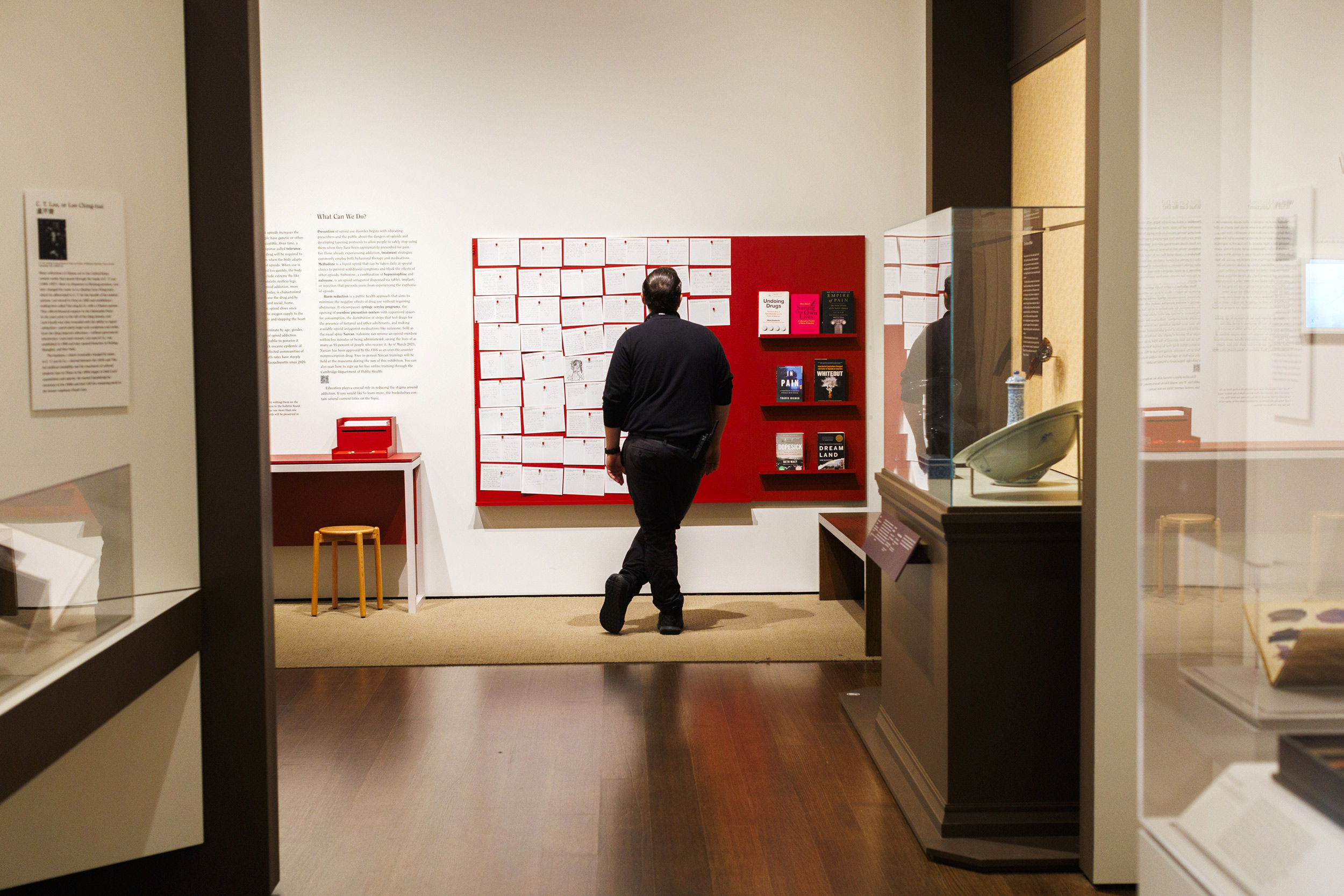
China’s opium problem has waxed and waned over the years but continues to this day. And now America has its own epidemic affecting millions.
The last part of the exhibition features book recommendations on the history of the crisis and a place where visitors can leave notes sharing their thoughts and feelings. An educational video, “Susan’s Brain,” plays on a loop explaining what opioid addiction does to the brain and neural pathways.
“We really wanted to use this section both to promote harm reduction practices and also to remove some of the stigma around addiction,” Laursen said.
To support this mission, a series of in-person events will also run through the coming months.
A drama therapy workshop on Nov. 11 will, “challenge participants’ ideas about addiction through a drama therapy model,” and “by examining, embodying, and destigmatizing addiction and creating metaphorical objects of care, love, and support, participants will develop a shared understanding of addiction and how it affects daily life.”
In conjunction with the Cambridge Public Health Department and Somerville Health and Human Services, Narcan trainings will take place Nov. 19 through Dec. 1.
A series on lectures and gallery talks that can be found on the museum’s website digs deeper into the history and implications of the opium trade on current U.S.–China relations.
“Objects of Addiction” is on display through Jan. 14 in the Special Exhibitions Gallery on Level 3 of the Harvard Art Museums. Museum entry is free for all.




